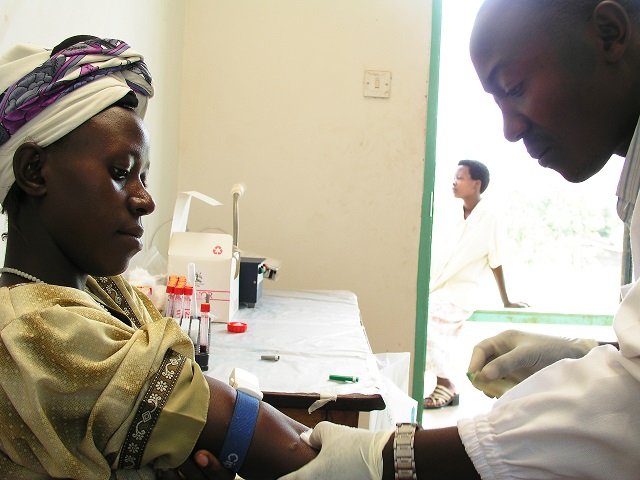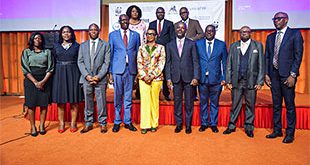
Africa’s HIV prevention measures are yielding results, with a new UN report revealing that for the first time, most new infections now occur outside the continent. Despite existing gaps, the report offers hope on the path toward 2030 targets.
SPECIAL REPORT | BIRD AGENCY | Africa’s prevention measures in the fight against new HIV infections are paying off, according to a new report by UN AIDS.
The report, “The Urgency of Now: AIDS at a Crossroads,” unveiled on July 22 at the 25th International AIDS Conference in Munich, highlights that sub-Saharan Africa has achieved the steepest reduction in HIV cases compared to 2010.
“Four countries (Kenya, Malawi, Nepal and Zimbabwe) have reduced their numbers of annual new HIV infections by 75% and are well on track to reach the target of reducing new HIV infections by 90% by 2030,” the authors explain.
“For the first time, the number of new HIV infections outside sub-Saharan Africa surpassed the number of new HIV infections in sub-Saharan Africa” the report reads.
New HIV infections have fallen by 39% since 2010 globally, and by 59% in eastern and southern Africa. However, the report shows that new HIV infections are on the rise in some regions, including in the Middle East and North African region. Other regions seeing a surge in infections include Eastern Europe and central Asia, and Latin America.
While almost half of the people who acquired HIV in 2023 – 450000 people of the global 1.3 million new cases – live in the eastern and southern African region, the report acknowledges the fact that the two regions have achieved the steepest decline in new infections since 2010, a 56% decline.
Globally, the steepest declines in numbers of new HIV infections have been among children aged 0–14 years, a trend that is reflective in Africa where “far fewer children aged 0–14 years are acquiring HIV.”
“This trend is due largely to achievements in eastern and southern Africa, where the annual number of children acquiring HIV fell by an estimated 73% between 2010 and 2023,” the authors highlight.
There is, however, a need to increase intervention efforts in other regions, such as in western and central Africa where progress has been slower.
Some countries on the continent are proving to be steadfast in creating a blueprint on how to effectively use public sector resources and plan to eliminate vertical infections.
Namibia, for instance, in May received a bronze tier certification from the WHO for reducing mother-to-child transmission to less than 5%. The southern African country avoided 28000 vertical transmissions in the last 20 years, leading to a 70% reduction in vertical transmissions. Botswana has also in the past (in 2021) been lauded for being on-track to eliminating mother-to-child transmission of HIV.
Besides the reduction in new transmissions, the report also underscored the success in access to treatment options for existing cases. More patients are now accessing free antiretroviral therapy offered through the public health sector.
“In 2023, almost three in four adults (73% [66–81%]) living with HIV globally had a suppressed viral load, a big improvement compared with the 40% [36–45%] in 2015,” the report explains.
This has more than halved annual AIDS-related deaths, dropping from 1.3 million in 2010 to 630,000 in 2023. In Africa, the eastern and southern African region has seen a 57% drop in number of AIDS-related deaths between 2010 and 2023.
Other regions seeing equally commendable progress in averting deaths include in the western and central African region, where the decline reached 55% in 2023 while Middle East and North Africa saw a 6% decline in AIDS-related infections.
Eastern Europe and central Asia, witnessed a 34% rise in AIDS-related deaths over the period.
While globally the 2025 prevention target goal of having 95% of people at risk of HIV infection having access to and using effective prevention options remains out of reach, the global HIV prevention response is proceeding at an encouraging pace.
In Africa, the availability of diverse prevention methods provides unparalleled flexibility, encouraging individuals to adopt at least one form of prevention. With more options now than ever before, people can choose the method that best suits their needs, thereby enhancing overall participation in preventive measures.
Condom use remains the most effective low-cost HIV prevention method. Household survey data suggest about 36% of adults in eastern and southern Africa and 25% in western and central Africa used a condom at last sex.
Other recent preventive options gaining ground in Africa include injectable PREP which was in February 2024 rolled out in Zambia making it the first country on the continent to authorize its use.
Despite significant progress in preventing new HIV infections, experts are alarmed by the shrinking funding for scaling HIV prevention among the most affected populations.
The report details that in 2023, total resources available for HIV (US$19.8 billion) dropped by 5% from 2022 and were US$9.5 billion short of the amount needed by 2025 (US$29.3 billion).
According to UNAIDS Executive Director Winnie Byanyima, political willingness among leaders is critical as it can “save millions of lives, prevent millions of new HIV infections, and ensure that everyone living with HIV can live healthy, full lives.”
“Whether leaders fulfill their pledge to end AIDS is a political and financial choice. The time to choose the right path is now,” said Byanyima explained during the launch of the report.
*****
SOURCE: Bird Story Agency
 The Independent Uganda: You get the Truth we Pay the Price
The Independent Uganda: You get the Truth we Pay the Price



